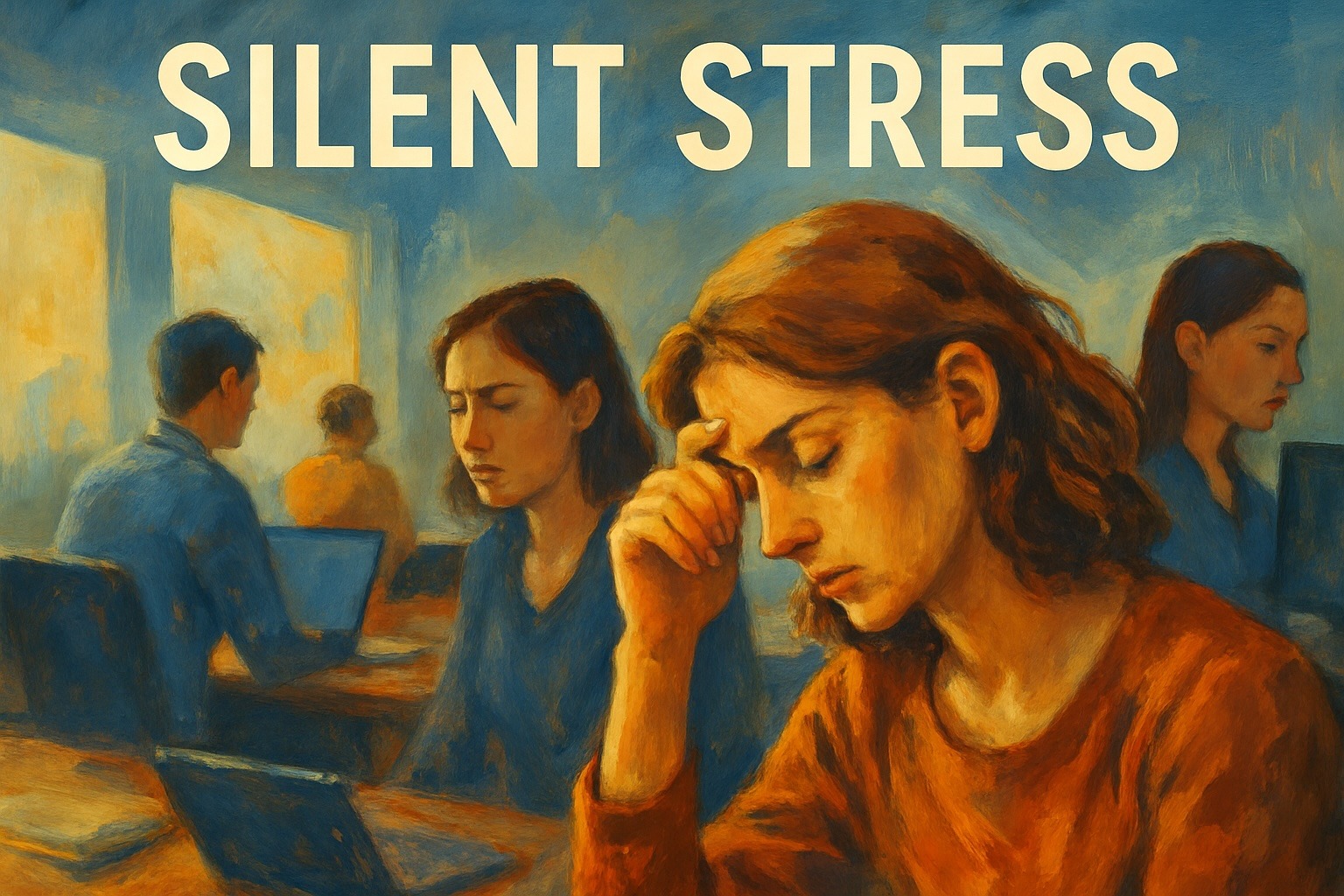Stress doesn’t always show up as a frantic team pace, an overflowing inbox, or the tight deadlines we often associate with burnout. Sometimes, stress is quiet. It’s unspoken, subtle, and often invisible.
It’s the tension that lingers without acknowledgment.
The unclear expectations that leave people second-guessing.
The micro-pressure that slowly drains team morale.
In this post, we’re diving into the silent stressors that quietly chip away at team connection, engagement, and energy—often without being detected until it’s too late.
Stress Indicators That Don’t Show Up in Productivity Reports
When we think of stress in a team, we often turn to metrics—deadlines, performance, output. But silent stress doesn’t always affect the numbers. On the surface, everything can appear “fine.” Tasks get completed. People show up. But underneath, something is off.
Here are warning signs that silent stress may be affecting your team:
- Less creativity: Team members stop contributing new ideas—not due to disinterest, but because constant pressure stifles creative thinking.
- Tense communication: Minor misunderstandings turn into major friction. People may withdraw or become defensive.
- Disengagement: Individuals appear present but are mentally checked out—going through the motions without energy or enthusiasm.
These are quiet signs that something deeper is happening—even when the reports say “all good.”
When Silence Isn’t Peace
We often treat silence as a green flag: “If no one’s raising concerns, things must be working.” But silence can just as easily be a red flag.
Here’s how to know when silence is a signal, not serenity:
- Avoiding hard conversations: People stay quiet about issues because they fear conflict or feel it’s not worth the effort.
- No feedback loops: When no one shares ideas for improvement, it may mean they don’t believe change is possible.
- Surface-level connection: Conversations become transactional. The deeper sense of connection fades, even among high-functioning teams.
Silence doesn’t always mean safety. In many teams, it signals a lack of psychological safety—a critical foundation for healthy, resilient workplaces.
Why Psychological Safety Matters More Than Ever
Psychological safety is the belief that you can speak up with ideas, questions, concerns, or mistakes without fear of embarrassment or backlash. It’s what allows teams to think creatively, take risks, and navigate challenges together.
When it’s absent, silent stress fills the gap.
People hold back—not because they have nothing to say, but because they don’t feel safe saying it. And over time, that silence builds micro-pressure that can lead to frustration, low morale, and burnout.
Without psychological safety:
- Innovation stalls – Teams stop experimenting or challenging the status quo.
- Stress increases – The emotional labor of “staying silent” is exhausting.
- Motivation drops – When people don’t feel heard, their energy naturally fades.
Psychological safety isn’t just a “nice-to-have.” It’s a resilience tool.
How to Combat Silent Stress on Your Team
So what can you do to bring hidden stress to light and build a stronger, more open team culture?
Start here:
- ✅ Encourage regular check-ins – Create space for team members to share how they’re doing—beyond just the work.
- ✅ Foster a feedback culture – Make feedback a two-way practice. Ask for input, and model how to give it constructively.
- ✅ Normalize vulnerability – As a leader, share your own challenges. When you show it’s okay not to be perfect, others feel safe to do the same.
Final Thought: Don’t Let the Quiet Become Costly
When stress goes unspoken, it doesn’t disappear—it compounds.
But when you create space for honest communication and psychological safety, you reduce invisible pressure, strengthen trust, and build a team that doesn’t just survive—but thrives.
Stay tuned for more in our Burnout Prevention & Team Resilience series. Together, we can change the narrative and build workplaces where burnout isn’t inevitable—it’s preventable.


